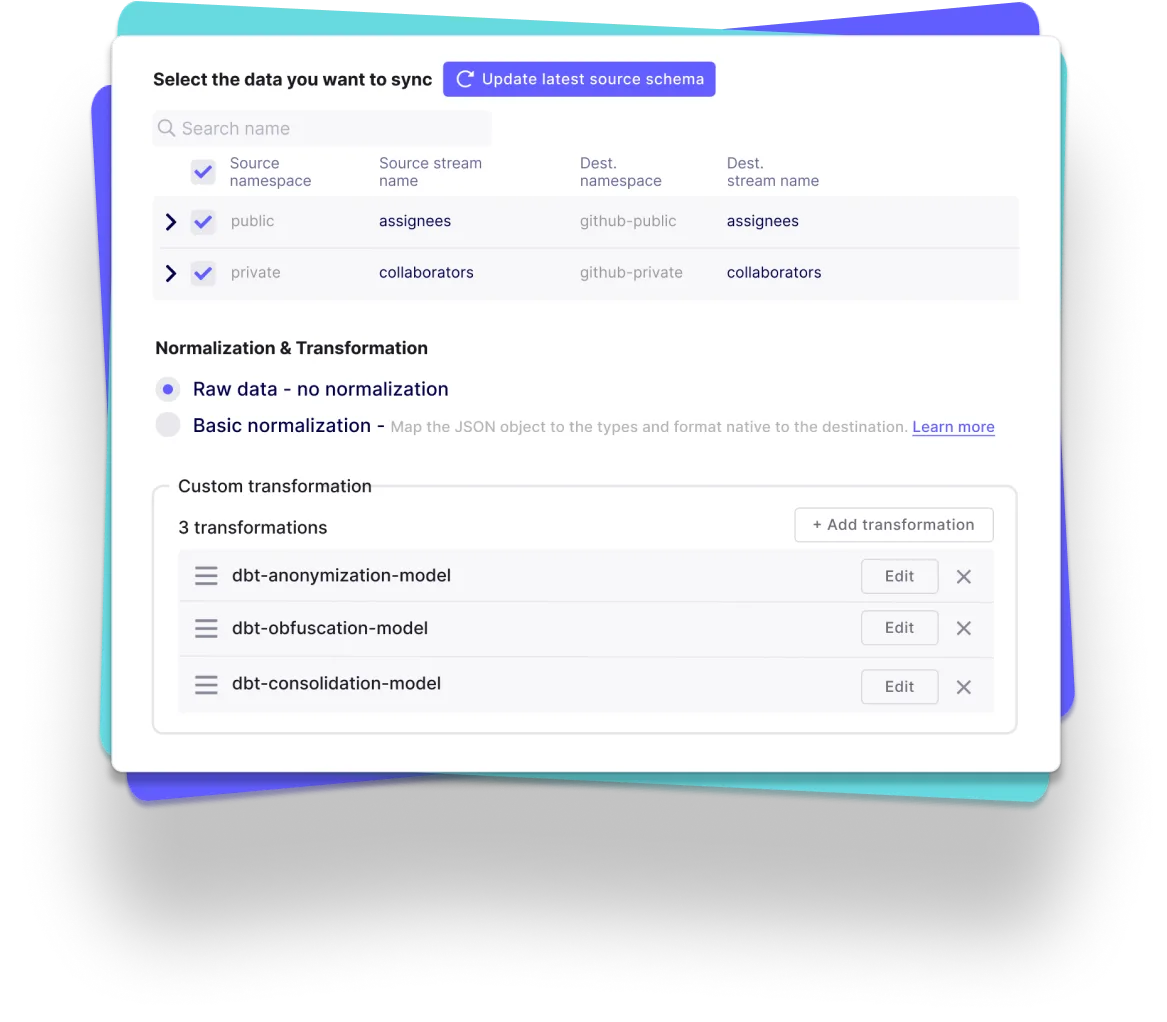
Top companies trust Airbyte to centralize their Data









Sync your Data
Ship more quickly with the only solution that fits ALL your needs.
As your tools and edge cases grow, you deserve an extensible and open ELT solution that eliminates the time you spend on building and maintaining data pipelines
Leverage the largest catalog of connectors

Cover your custom needs with our extensibility

Free your time from maintaining connectors, with automation
- Automated schema change handling, data normalization and more
- Automated data transformation orchestration with our dbt integration
- Automated workflow with our Airflow, Dagster and Prefect integration
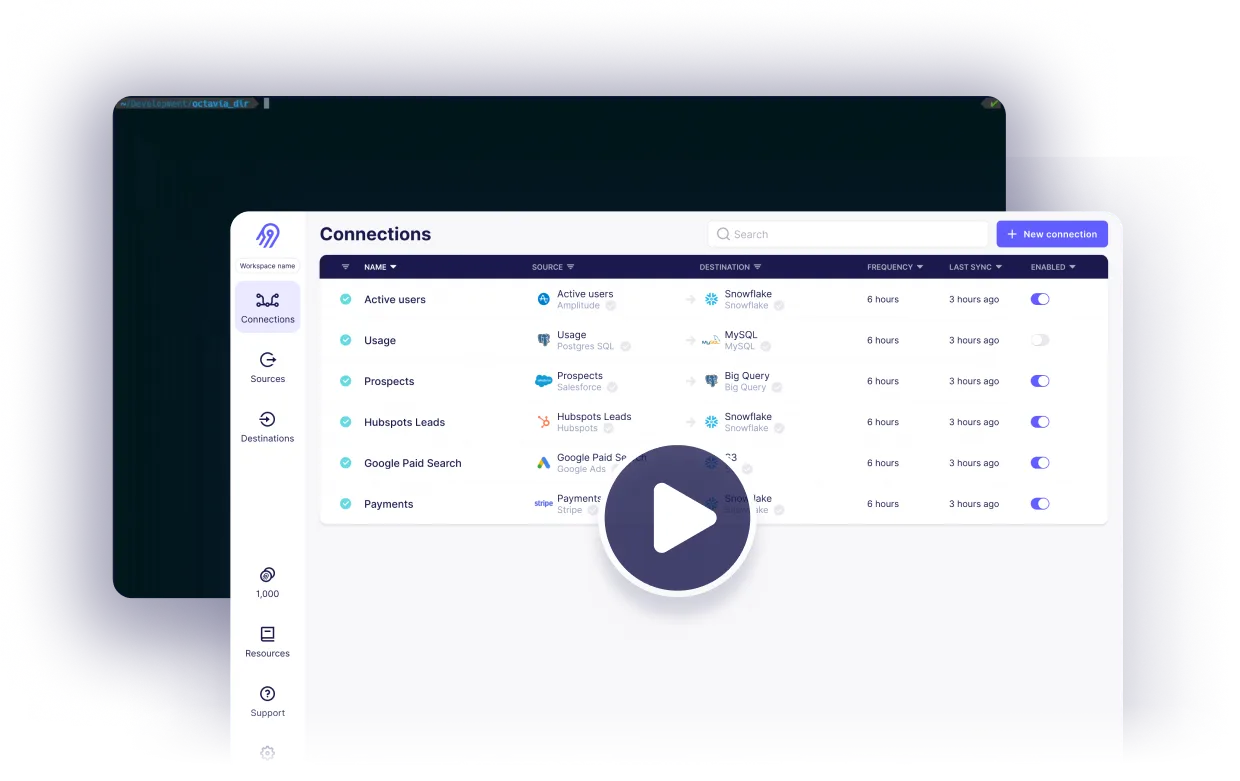
Reliability at every level
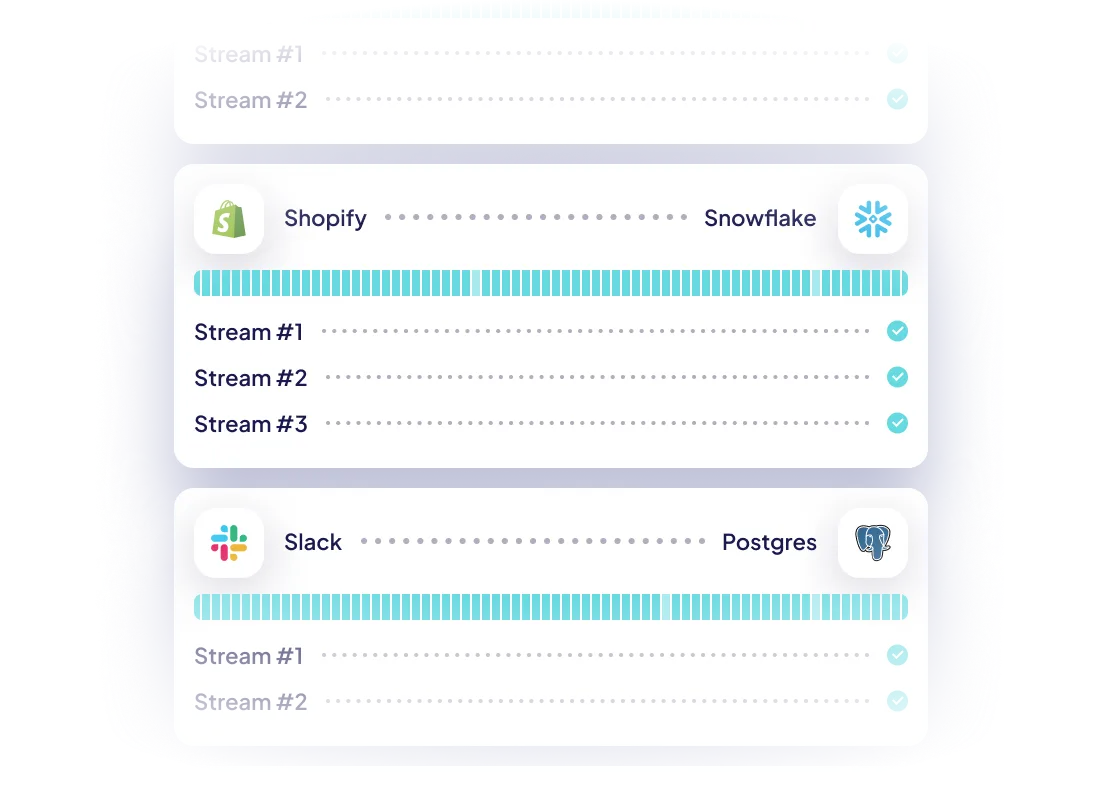


Airbyte Open Source
Airbyte Cloud
Airbyte Enterprise

Why choose Airbyte as the backbone of your data infrastructure?
Keep your data engineering costs in check
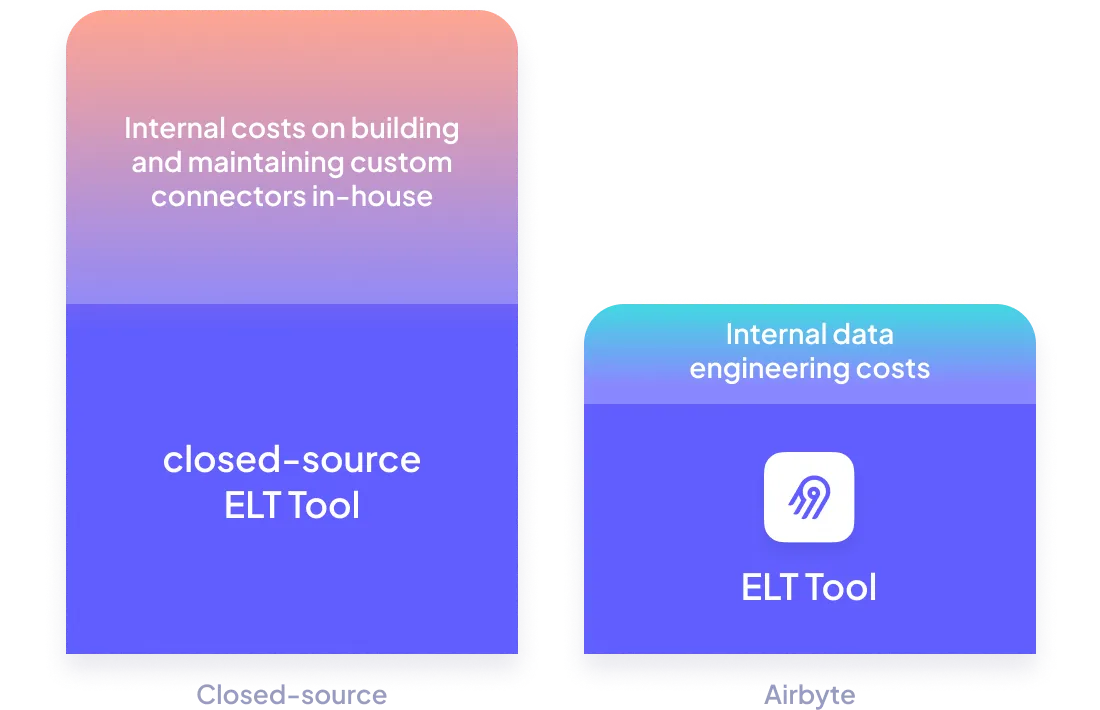
Get Airbyte hosted where you need it to be
- Airbyte Cloud: Have it hosted by us, with all the security you need (SOC2, ISO, GDPR, HIPAA Conduit).
- Airbyte Enterprise: Have it hosted within your own infrastructure, so your data and secrets never leave it.

White-glove enterprise-level support
Including for your Airbyte Open Source instance with our premium support.
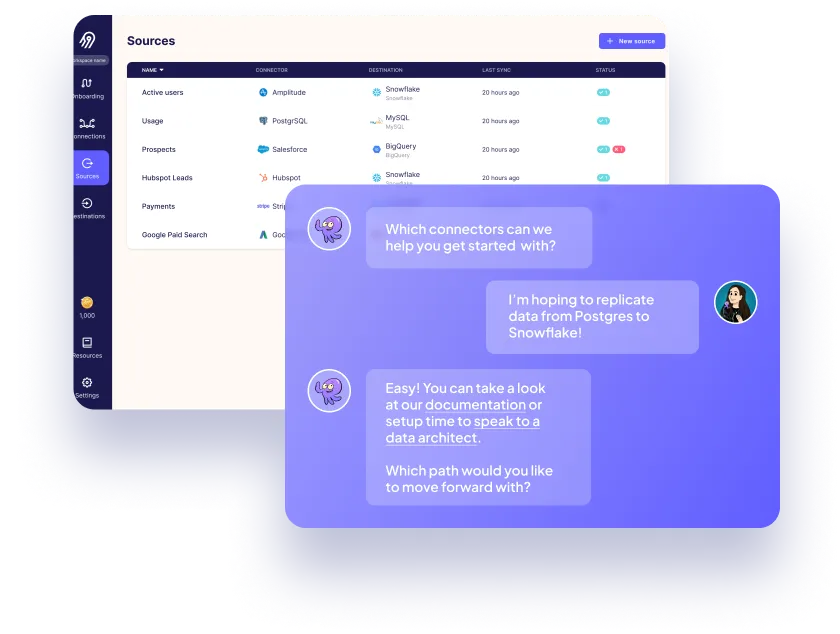

Fnatic, based out of London, is the world's leading esports organization, with a winning legacy of 16 years and counting in over 28 different titles, generating over 13m USD in prize money. Fnatic has an engaged follower base of 14m across their social media platforms and hundreds of millions of people watch their teams compete in League of Legends, CS:GO, Dota 2, Rainbow Six Siege, and many more titles every year.
Ready to get started?
FAQs
What is ETL?
ETL, an acronym for Extract, Transform, Load, is a vital data integration process. It involves extracting data from diverse sources, transforming it into a usable format, and loading it into a database, data warehouse or data lake. This process enables meaningful data analysis, enhancing business intelligence.
Amazon S3 (Simple Storage Service) is a cloud-based object storage service that provides developers and IT teams with secure, durable, and scalable storage for their data. It allows users to store and retrieve any amount of data from anywhere on the web, making it easy to build and scale applications, backup and archive data, and analyze data. S3 is designed to provide high availability and durability, with data automatically replicated across multiple availability zones within a region. It also offers a range of features such as versioning, lifecycle policies, and access control to help users manage their data effectively.
JSON File is a tool that is used to store and exchange data in a structured format. JSON stands for JavaScript Object Notation, and it is a lightweight data interchange format that is easy for humans to read and write, and easy for machines to parse and generate. JSON files are commonly used in web applications to transfer data between the server and the client, and they are also used in many other programming languages and platforms. JSON files consist of key-value pairs, where each key is a string and each value can be a string, number, boolean, array, or another JSON object. The syntax of JSON is similar to that of JavaScript, but it is a separate language that can be used independently of JavaScript. JSON File is a tool that allows users to create, edit, and view JSON files. It provides a user-friendly interface for working with JSON data, and it can be used by developers, data analysts, and anyone else who needs to work with structured data. With JSON File, users can easily create and modify JSON files, and they can also validate the syntax of their JSON data to ensure that it is well-formed and error-free.
Amazon S3's API provides access to a wide range of data types, including:
1. Object data: This includes the actual files stored in S3 buckets, such as images, videos, documents, and other types of files.
2. Metadata: S3 stores metadata about each object, including information such as the object's size, creation date, and last modified date.
3. Access control data: S3 provides access control mechanisms to restrict access to objects in a bucket. The API provides access to information about access control policies and permissions.
4. Bucket data: S3 buckets are containers for objects. The API provides access to information about buckets, such as their names, creation dates, and region.
5. Logging data: S3 can log access requests to objects in a bucket. The API provides access to these logs, which can be used for auditing and compliance purposes.
6. Inventory data: S3 can generate inventory reports that provide information about the objects stored in a bucket. The API provides access to these reports.
7. Metrics data: S3 can generate metrics about the usage of a bucket, such as the number of requests and the amount of data transferred. The API provides access to these metrics.
What is ELT?
ELT, standing for Extract, Load, Transform, is a modern take on the traditional ETL data integration process. In ELT, data is first extracted from various sources, loaded directly into a data warehouse, and then transformed. This approach enhances data processing speed, analytical flexibility and autonomy.
Difference between ETL and ELT?
ETL and ELT are critical data integration strategies with key differences. ETL (Extract, Transform, Load) transforms data before loading, ideal for structured data. In contrast, ELT (Extract, Load, Transform) loads data before transformation, perfect for processing large, diverse data sets in modern data warehouses. ELT is becoming the new standard as it offers a lot more flexibility and autonomy to data analysts.








